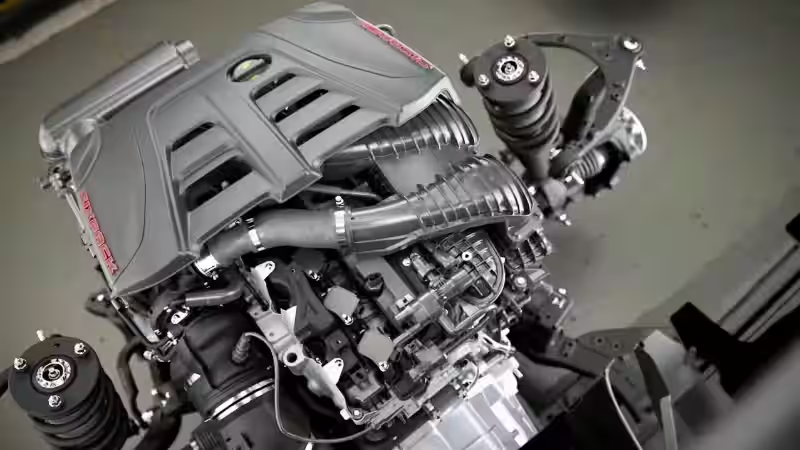Introduction
There’s something primal about the sound of a roaring V8 engine—the deep growl at idle, the thunderous crackle on acceleration, and the spine-tingling scream at redline. And when it comes to American muscle, few cars command attention like the Dodge Charger.
But today, we’re not talking about the modern Hellcat or even the classic 426 Hemi. No, we’re diving into something a bit different—the Dodge Charger Sixpack, a lesser-known but equally thrilling beast from the golden era of muscle cars.
If you’ve never heard one of these monsters fire up, you’re in for a treat. Buckle up as we explore the sound, power, and legacy of the gas-powered Dodge Charger Sixpack—and why it still makes gearheads weak in the knees.

What Is the Dodge Charger Sixpack?
Before we get to the glorious sound, let’s break down what makes the Sixpack special.
A Brief History
- Introduced in 1969, the Charger Sixpack was Dodge’s answer to high-performance muscle cars.
- Featured a 440 cubic-inch (7.2L) V8 with a triple two-barrel carburetor setup (hence the name “Sixpack”).
- Produced 390 horsepower and 490 lb-ft of torque—serious numbers for the time.
- Competed with icons like the Chevy Chevelle SS 454 and Ford Torino Cobra Jet.
Why the Sixpack Stands Out
While the 426 Hemi gets all the glory, the 440 Sixpack was a more street-friendly yet still brutal powerplant. The triple carburetors gave it a unique throttle response and an unmistakable sound.
| Spec | 440 Sixpack | 426 Hemi |
|---|---|---|
| Displacement | 440 cu-in | 426 cu-in |
| Horsepower | 390 HP | 425 HP |
| Torque | 490 lb-ft | 490 lb-ft |
| Carburetion | Triple 2-barrel | Dual 4-barrel |
| Streetability | More drivable | Race-focused |
The Sound of the Sixpack: A Symphony of Muscle
Now, the moment you’ve been waiting for—what does the Dodge Charger Sixpack actually sound like?
Cold Start: The First Roar
Imagine this:
- You turn the key, the starter motor whirs, and then—BOOM!
- A deep, rumbling idle settles in, shaking the ground beneath you.
- The triple carbs create a unique, slightly uneven burble at low RPMs.
Revving It Up: Pure Thunder
- At 2,000–3,000 RPM, the exhaust note turns into a hard-edged growl.
- Past 4,000 RPM, the sound becomes raw and unfiltered, with a sharp bark on throttle lift-off.
- Unlike modern turbocharged engines, the Sixpack doesn’t hold back—it screams with mechanical fury.
Driving Experience: Music to a Gearhead’s Ears
- Acceleration: A deep, bellowing roar that builds into a high-RPM howl.
- Deceleration: Loud, crackling backfires—the kind that sets off car alarms.
- Highway Cruising: A constant, bass-heavy drone that lets everyone know you’re coming.
Why the Sixpack’s Sound Is So Addictive
Modern cars have sound deadening, turbo muffling, and electronic tuning, but the Sixpack is pure, unfiltered combustion. Here’s why it’s so special:
- Triple Carb Induction Noise
- The whoosh of air rushing through three carburetors adds a mechanical symphony to the exhaust note.
- No Mufflers, No Regrets
- Many Sixpacks ran with straight pipes or glasspacks, making them obnoxiously loud in the best way.
- The Big-Block V8 Rumble
- The long-stroke 440 produces a deeper, more thunderous tone than smaller engines.
How to Experience the Sixpack’s Sound Today
Sadly, original Sixpack Chargers are rare, but you can still hear (or even own) one. Here’s how:
1. Visit a Muscle Car Show or Drag Strip
- Events like Mopar Nationals or local car meets often feature running Sixpacks.
2. Buy a Restored or Replica Charger
- Prices range from $50,000 to $150,000+ depending on condition.
- Pro tip: Look for cars with original drivetrains for the most authentic sound.
3. Build a Sixpack-Powered Project Car
- The 440 engine is still available in the aftermarket.
- Companies like Edelbrock offer modern Sixpack-style intake manifolds.
Final Thoughts: The Sixpack’s Roar Lives On
In an era of electric cars and synthetic engine noises, the Dodge Charger Sixpack reminds us why gasoline-powered muscle cars will always have a soul. Its sound is violent, unapologetic, and utterly intoxicating—a true relic of American horsepower.
If you ever get the chance to hear one in person, don’t just listen—feel it. Because that’s what muscle cars are all about.
What’s your favorite classic muscle car sound? Let me know in the comments!





